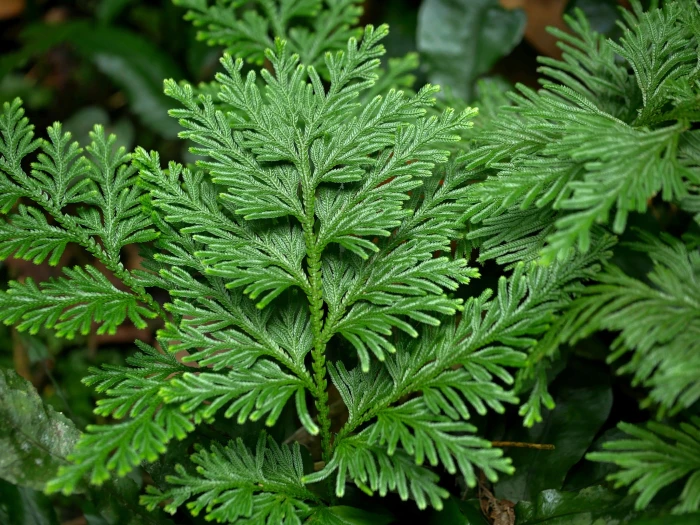Spreading Clubmoss
(Selaginella involvens)
Spreading Clubmoss (Selaginella involvens)
/
/

Jacy Chen
CC BY 4.0
Image By:
Jacy Chen
Recorded By:
Copyright:
CC BY 4.0
Copyright Notice:
Photo by: Jacy Chen | License Type: CC BY 4.0 | License URL: http://creativecommons.org/licenses/by/4.0/ | Rights Holder: Jacy Chen | Publisher: iNaturalist | Date Created: 2020-01-31T14:34:49-08:00 |

























Estimated Native Range
Climate Requirements for Machida, Japan
| This Plant | Your Site | Plant Suitability for Your Location | ||
|---|---|---|---|---|
| • Precipitation | 11" - 174" | 63" | Aquatic | Aquatic |
| • High Temp. | 49°F - 107°F | 86°F | Your summer temperatures are normal for this plant. | Excellent |
| • Low Temp. | -8°F - 73°F | 32°F | Your winter temperatures are normal for this plant | Excellent |
This plant should grow well at your location with about N inches per year (Y minutes per month) of irrigation.
Summary
Selaginella involvens, commonly known as Spreading Clubmoss, is an evergreen perennial herb native to a variety of habitats including moist forest floors, shaded slopes, and limestone regions in parts of Asia such as China, India, Japan, Korea, the Philippines, Russia (Siberia), Taiwan, and northern Thailand. It typically grows up to 18 inches tall and is characterized by its small, scale-like leaves and creeping stems that form dense mats. The plant is not particularly showy, but its delicate, fern-like appearance adds texture to garden compositions.
Spreading Clubmoss is valued for its use in shaded rock gardens, terrariums, and as ground cover in woodland gardens due to its tolerance of low light conditions. It thrives in moist, well-drained soil with high organic content and prefers part shade to full shade environments. In herbal medicine, it is used to treat gout and hyperuricemia. While it is generally low-maintenance, it can be sensitive to overwatering and may suffer from root rot if drainage is inadequate. It is not known to be invasive or to have aggressive roots, making it a safe choice for cultivation in a variety of settings.CC BY-SA 4.0
Spreading Clubmoss is valued for its use in shaded rock gardens, terrariums, and as ground cover in woodland gardens due to its tolerance of low light conditions. It thrives in moist, well-drained soil with high organic content and prefers part shade to full shade environments. In herbal medicine, it is used to treat gout and hyperuricemia. While it is generally low-maintenance, it can be sensitive to overwatering and may suffer from root rot if drainage is inadequate. It is not known to be invasive or to have aggressive roots, making it a safe choice for cultivation in a variety of settings.CC BY-SA 4.0
Plant Description
- Plant Type: Herb
- Height: 0.5-1 feet
- Width: 0.5-1 feet
- Growth Rate: Moderate
- Flower Color: N/A
- Flowering Season: Non-Flowering
- Leaf Retention: Evergreen
Growth Requirements
- Sun: Part Shade, Full Shade
- Water: Medium
- Drainage: Medium
Common Uses
Border Plant, Low Maintenance, Potted Plant
Natural Habitat
Moist forest floors, shaded slopes, and limestone regions
Other Names
Common Names: Asian Spikemoss
Scientific Names: Selaginella involvens , Lycopodioides involvens , Lycopodioides pennula , Lycopodium caulescens , Lycopodium caulescens , Lycopodium involvens , Lycopodium microstachyum , Lycopodium microstachyum , Selaginella bellula , Selaginella caudispica
GBIF Accepted Name: Selaginella involvens